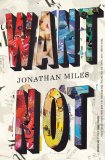Summary | Excerpt | Reviews | Beyond the book | Read-Alikes | Genres & Themes | Author Bio

How America Throws Away Nearly Half of Its Food (and What We Can Do About It)
by Jonathan BloomAs more people are going hungry while simultaneously more people are morbidly obese, American Wasteland sheds light on the history, culture, and mindset of waste while exploring the parallel eco-friendly and sustainable-food movements.
What Tom Vanderbilt did for traffic and Brian Wansink did for mindless eating, Jonathan Bloom does for food waste. The topic couldn't be timelier: As more people are going hungry while simultaneously more people are morbidly obese, American Wasteland sheds light on the history, culture, and mindset of waste while exploring the parallel eco-friendly and sustainable-food movements. As the era of unprecedented prosperity comes to an end, it's time to reexamine our culture of excess.
Working at both a local grocery store and a major fast food chain and volunteering with a food recovery group, Bloom also interviews experts - from Brian Wansink to Alice Waters to Nobel Prize-winning economist Amartya Sen and digs up not only why and how we waste, but, more importantly, what we can do to change our ways.
Bloom... vividly illustrates how waste is built into our whole way of eating, from farm to table to trashcan. As he traces the problem of waste into grocery stores, buffet restaurants, school lunchrooms, and convenience stores, Bloom argues that waste was understandable (if not forgivable) during the rampant consumerism and excess that characterized the 1980s, 1990s, and early 2000s. Nowadays, however, as Americans increasingly seek to reduce their carbon footprint, to eat and shop locally, to return to a simpler, less consumption-centered way of life, it's time we all stopped to consider not just the food that goes into our mouths but the millions of tons that bypasses our plates entirely. And, as hunger in the United States continues to persist, finding better solutions for our leftovers is not just an economic or environmental issue, Bloom suggests. It's a powerfully moral one...continued
Full Review
 (747 words)
(747 words)
(Reviewed by Norah Piehl).
Every day Americans waste enough food to fill the Rose Bowl football stadium.
Food waste makes up as much as 25% of what's in America's landfills.
Household recycling of items like aluminum, glass, and plastic increased 400% in the decade to 1999; meanwhile, only 2.5% of eligible food waste is composted.
The average family of four loses $2,200 per year in food waste.
17% of American children live in food insecure homes.
In 1982, the average bagel was 3 inches in diameter; by 2002, it had doubled to 6 inches.
President Barack Obama and First Lady Michelle Obama were photographed leaving a Chicago restaurant after a Valentine's Day dinner, holding a doggie bag of leftovers.
Simply switching school schedules so that recess ...

If you liked American Wasteland, try these:

by Oliver Franklin-Wallis
Published 2024
An award-winning investigative journalist takes a deep dive into the global waste crisis, exposing the hidden world that enables our modern economy—and finds out the dirty truth behind a simple question: what really happens to what we throw away?

by Jonathan Miles
Published 2014
A compulsively readable, deeply human novel that examines our most basic and unquenchable emotion: want. With a satirist's eye and a romantic's heart, Miles captures the morass and comedy of contemporary life in all its excess.